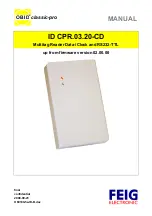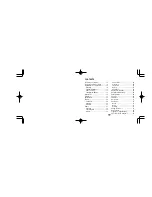
Qscan User’s Guide Version 1.4
Page
PROGRAMMING
Programming the Wiegand Output Formats (barcode)
The standard wiegand output permits the transmission of wiegand formats of up to
194 bits, containing up to three fields (site, id, and issue). Each field can contain up
to 64 bits each. Two parity bits may also be programmed.
Different wiegand output formats can be defined. The format that is used is
dependent on the data which is read by the reader. There are 2 definable formats
for barcode data.
For barcode data, the format that is used depends on the final length of the barcode
data after masking. You can specify a barcode length to be matched for each of the
formats. If the barcode length mathes the format’s length, then that format is used.
A length of 0 can be used to define one format as the default format to be used for
all barcode reads. Note that a format needs to be active (“a=1”) to be recognized.
Each format contains the definitions of how the data is to be transmitted. These
definitions include:
The number of bits to be used for the site, id, and issue fields
(“
ss,bb,ii
”)
A setting to organize each field as msb or lsb (“
x,y,z
”)
The location(s) in the barcode where the data for each field is to be
extracted (“
ssss,bbbb,iiii
”)
The number of characters to use for each of of those fields (“
sd,bd,id
”)
Which fields are to be included in the output format (“
h,i,j
”)
Number of bits to be used for left and right parity (“
lpp,rpp
”)
An indicator to force an override of the site code (“
k
”).
An example of programming a standard 26 bit wiegand output follows. The format
will be set up to work on all barcodes that are read, regardless of the length of the
barcode. The first 3 digits of the barcode will be used for the site code, and the next
5 digits will be used for the id. No issue code will be present:
BARCODE -> WIEGAND OUT
















































